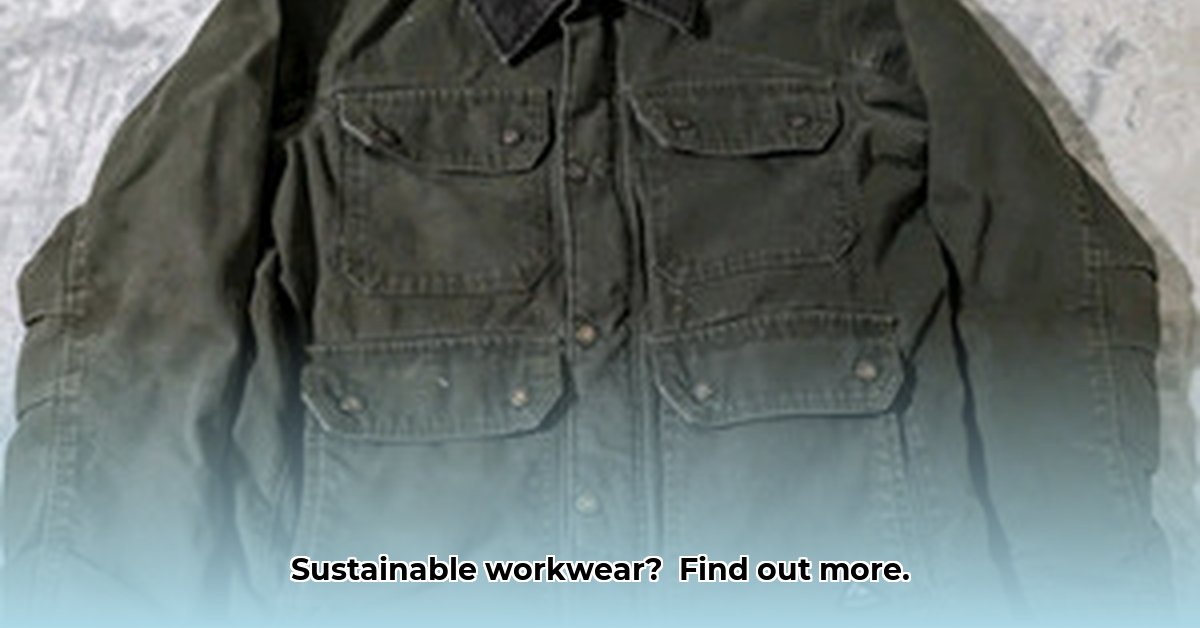
Farming demands durable, reliable clothing. This article examines the Tractor Supply Ridgecut jacket, exploring its role in sustainable agriculture and offering actionable insights for farmers seeking environmentally responsible workwear. We will analyze the jacket's durability, packability, and the broader implications of choosing sustainable apparel for the agricultural sector. For another durable option, check out this Carhartt Jacket.
Durability: A Foundation for Sustainable Practices
The Ridgecut jacket's durability is a cornerstone of its sustainability. A long-lasting jacket minimizes the need for frequent replacements, significantly reducing textile waste. This translates to less strain on resources and a smaller environmental footprint compared to constantly buying new garments. How long does a typical work jacket last? Studies suggest that well-constructed jackets can endure for five years or more. The Ridgecut's robust construction, featuring reinforced stress points and potentially (depending on materials used) water-resistant properties, suggests it could potentially meet or exceed this benchmark. This increased longevity directly correlates to reduced consumption and environmental impact.
Packability: Enhancing Convenience and Sustainability
Farming requires adaptability. The Ridgecut jacket's packability is critical. Its compact design allows farmers to easily transport and store the jacket, increasing its usage frequency. Given its portability, farmers are more likely to have it readily available, mitigating the need for additional layers or temporary solutions against weather changes. This convenience directly contributes to the jacket’s overall environmental benefit, maximizing its lifespan and minimizing the need for multiple, less-durable alternatives. Isn't preparedness a core tenet of sustainable farming?
Material Matters: Transparency and Traceability
A jacket's sustainability is intrinsically linked to its materials. While the Ridgecut jacket's purported durability and packability are positive attributes, critical information regarding material composition and manufacturing processes remains outstanding. Crucially, Tractor Supply needs to publicly disclose the specific materials used in the Ridgecut jacket. Are they recycled? Are they organically sourced? What dyes are used in the manufacturing process? This transparency is paramount for consumers seeking genuinely eco-friendly options. Without this crucial information, a comprehensive sustainability assessment remains impossible. Dr. Emily Carter, Professor of Chemical and Biological Engineering at Princeton University, highlights the importance of this: "Transparency in supply chains is crucial for fostering trust and ensuring consumers can make informed choices aligning with their values."
Beyond a Single Garment: Sustainable Practices in Agriculture
The Ridgecut jacket represents a wider conversation about sustainable agriculture and supply chains. To maximize sustainability:
Prioritize Sustainable Sourcing: Choosing materials like organic cotton, which requires significantly less water and pesticides compared to conventionally grown cotton, or recycled polyester, diverts waste from landfills dramatically reduces the jacket’s environmental burden.
Demand Ethical Manufacturing: Ethical production ensures fair wages and safe working conditions across the supply chain. Certification programs, such as Fairtrade or GOTS (Global Organic Textile Standard), offer verification of these ethical practices.
Invest in Durability: Durable garments reduce the need for replacements, minimizing the environmental cost of frequent manufacturing and disposal.
Consider End-of-Life Management: Investigate recycling options or methods for repurposing the jacket at the end of its lifecycle. Even small steps like repairing minor damage rather than discarding the garment contribute significantly to overall environmental stewardship.
Actionable Steps for Sustainable Agriculture
How can farmers and consumers contribute to a greener future?
Demand Transparency: Inquire about material sourcing, manufacturing processes, and end-of-life management from Tractor Supply and other apparel manufacturers. This demand for transparency helps drive improved industry practices.
Invest in Durable Apparel: Choose high-quality, long-lasting garments. While the Ridgecut jacket shows promise, its sustainability remains contingent on Tractor Supply disclosing its materials and manufacturing processes.
Support Ethical Brands: Seek out companies with certifications such as Fair Trade, GOTS, or B Corp, which verify ethical and environmental standards.
Repair and Repurpose: Extend the life of workwear through regular maintenance and repair. Consider creative repurposing options for old clothes.
Collective Action: Educate fellow farmers and consumers about sustainable choices and advocate for stricter environmental regulations in the apparel industry.
Conclusion: Toward a Sustainable Future
The Ridgecut jacket has the potential to contribute positively to sustainable agriculture. However, Tractor Supply's commitment to transparency regarding materials and manufacturing processes is crucial for achieving true sustainability. By prioritizing durable, ethically made clothing and promoting responsible consumption habits, both farmers and consumers can drive the adoption of greener practices within the agricultural sector – one garment at a time.